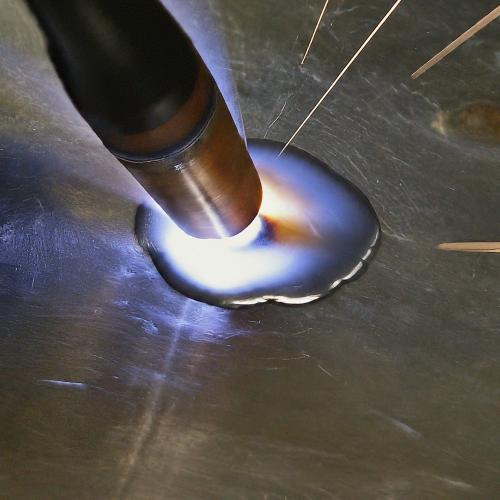How To Replace Shower Faucet: Essential Tools and Techniques

Changing your faucet can rejuvenate your kitchen or bathroom and improve water flow and pressure. However, many homeowners feel intimidated by the task, assuming it requires professional skills or costly plumber visits.
Fortunately, with the proper guidance and a few essential tools, you can tackle bathroom or kitchen faucet installation as a DIY project. This process not only enhances your bathroom aesthetics but also provides a sense of accomplishment.
The Benefits of Changing Your Shower Faucet
Understanding the advantages of switching out your faucet can motivate you to get started:
Improved Functionality: New faucets often provide better water flow and control.
Aesthetic Upgrade: Modern designs can refine your kitchen and bathroom's look.
Energy Efficiency: New fixtures can reduce water usage, saving on bills.
Additionally, if you encounter any complications, knowing how to troubleshoot can help maintain your system's integrity. In the following sections, we will outline the essential tools, techniques, and tips to ensure your shower faucet installation is a success.
Comparison of Different Faucet Types
When selecting a new shower faucet, consider the following types:
Single-Handle Faucets: Offer ease of use with temperature and flow control.
Dual-Handle Faucets: Provide better temperature regulation, appealing to those who prefer precise settings.
Touchless Faucets: Promote hygiene and convenience, ideal for high-traffic bathrooms.
Each type has unique benefits that cater to different preferences.
Essential Tools for Changing Your Shower Faucet
To successfully change your shower faucet, having the right tools at your disposal makes all the difference. Whether you’re removing the old faucet or installing a new one, each phase requires specific tools that ensure efficiency and effectiveness.
Tools for Removing the Old Faucet
Before starting your installation, gather the necessary tools to facilitate the removal of the old faucet:
Adjustable Wrench: Ideal for loosening and unscrewing faucet fittings.
Screwdriver Set: Both Phillips and flathead screwdrivers will be essential for handling screws.
Plumber’s Tape: Helps prevent leakages when reattaching fittings.
Bucket: To catch any residual water when disconnecting the plumbing.
With these tools ready, you'll minimize frustrations during the removal process.
Tools for Installing the New Faucet
Once the old faucet is out, it's time to focus on the installation phase. You will need:
Hex Key: Often provided with new faucets, useful for tightening fittings.
Caulking Gun and Silicone Sealant: Ensures a watertight seal around the faucet installation.
Level: Ensures your new faucet is aligned correctly.
Having these handy will streamline your faucet installation process, leading to a successful upgrade.
Techniques for Changing Your Shower Faucet
With the right tools in hand, it’s time to focus on the techniques that will guide you through changing your shower faucet. Following a step-by-step approach ensures you don’t miss any crucial steps, making the process smoother and more manageable.
Step-by-Step Guide for Removing the Old Faucet
Turn Off the Water Supply: Locate the shut-off valves and turn them off to prevent any leaks.
Remove the Handle: Unscrew the handle using a screwdriver or hex key. Set it aside safely.
Disconnect the Water Lines: Use an adjustable wrench to detangle the water supply lines from the faucet.
Unscrew the Faucet Base: Loosen the retaining nuts securing the faucet to the wall.
Remove the Old Faucet: Carefully lift it out from the wall, checking for any remaining attachments.
Step-by-Step Guide for Installing the New Faucet
Prepare the Area: Clean the mounting area where the new faucet will go.
Attach the New Faucet: Position it over the holes and secure it with retaining nuts.
Reconnect the Water Lines: Use the adjustable wrench to tighten the supply lines without over-tightening.
Install the Handle: Reattach the handle, ensuring it operates smoothly.
Turn On Water Supply: Restore the water flow and check for leaks around connections.
By following these steps meticulously, you’ll be well on your way to successfully changing your shower faucet.
Additional Tips and Precautions
While working on changing your shower faucet, it’s essential to keep safety and successful installation strategies in mind. These practices can prevent accidents and ensure a flawless faucet upgrade.
Precautions for Safety
Before starting the installation, consider the following safety measures:
Wear Gloves: Protect your hands from sharp edges and plumbing debris.
Use Safety Goggles: Guard your eyes against falling parts or unexpected splashes.
Turn Off Electricity (if applicable): If your setup involves electrical systems, ensure they are turned off to avoid shocks.
Maintaining these precautions guarantees a safer working environment.
Tips for a Successful Installation
To enhance the quality of your installation, keep these tips in mind:
Read the Instructions: Follow the manufacturer's guidelines carefully for best results.
Check Compatibility: Ensure the new faucet fits well with the existing plumbing.
Take Your Time: Rushing can lead to mistakes. Take a measured approach.
These additional tips and precautions will help ensure your faucet installation is not only safe but also successful.
Troubleshooting Common Issues
After successfully changing your shower faucet, you may encounter some common issues. Understanding how to troubleshoot these problems can save time and money while ensuring your installation operates smoothly.
How to Fix Leaks?
Leaks are a common concern after a faucet installation. Here’s how to address them:
Identify the Source: Check all connections to pinpoint the leak.
Tighten Connections: Use an adjustable wrench to carefully tighten loose fittings.
Replace Washer or O-rings: If leaks persist, replacing worn washers or O-rings can often resolve the issue.
Always ensure you are using the plumber's tape on threaded connections for extra sealing.
Dealing with Rusty or Stuck Parts
Rusty or stuck parts can pose a challenge during installation or maintenance. Here’s how to tackle them:
Apply Penetrating Oil: Spraying rust penetrant around the affected area can loosen stuck parts.
Use Heat: A heat source, like a hairdryer, can expand metal, making it easier to detach.
Pry Gently: If necessary, gently use a flathead screwdriver to pry apart stubborn components.
By following these troubleshooting steps, you can effectively address common issues and maintain your shower faucet functionality.
Conclusion
Completing your faucet installation successfully provides both aesthetic and functional benefits. However, it’s essential to choose the right faucet type, understand the key points of the process, and clarify common queries to enhance your experience. You can always hire professional plumbers near you for new faucet installation fast and professionally.







Comments